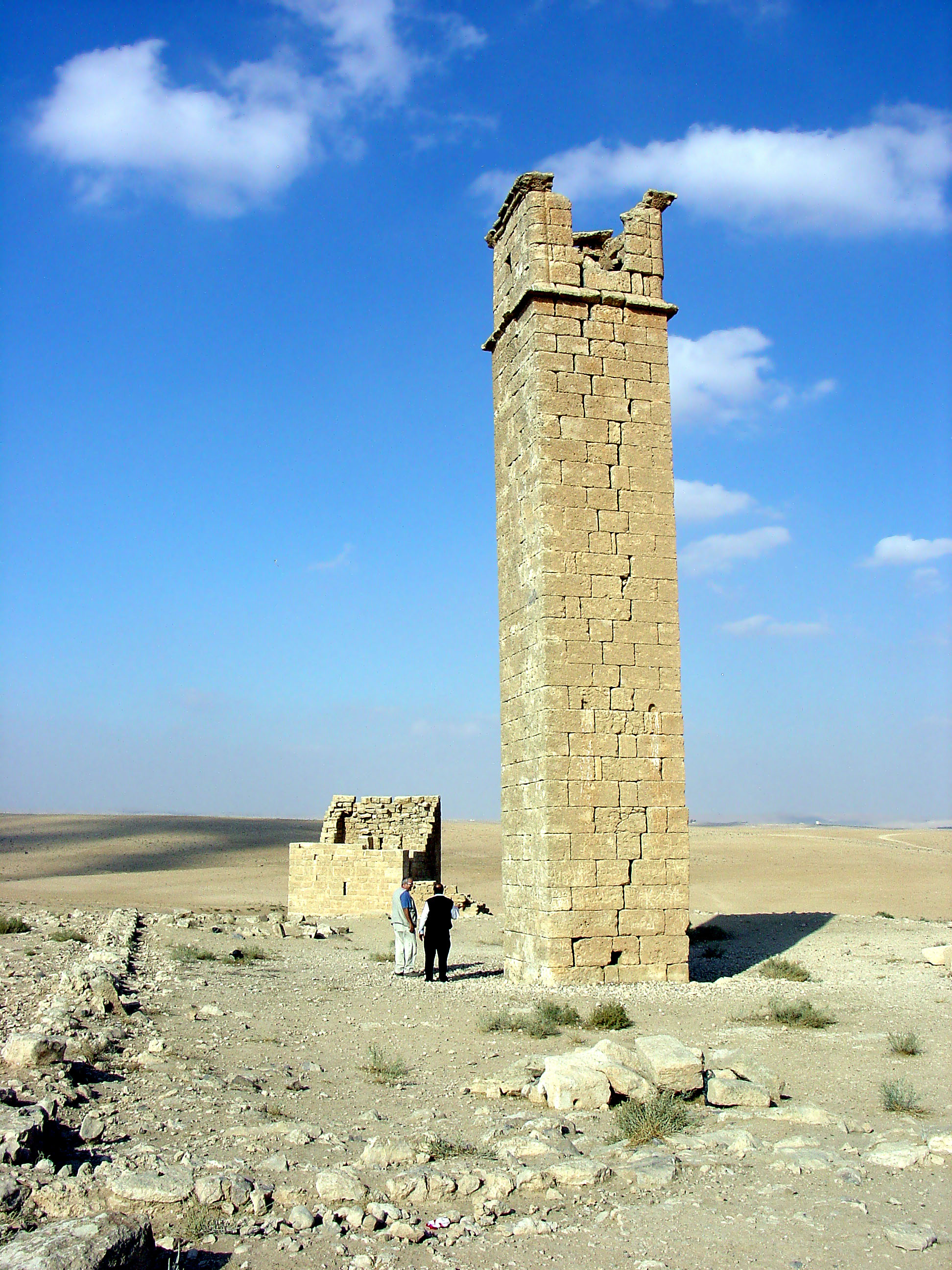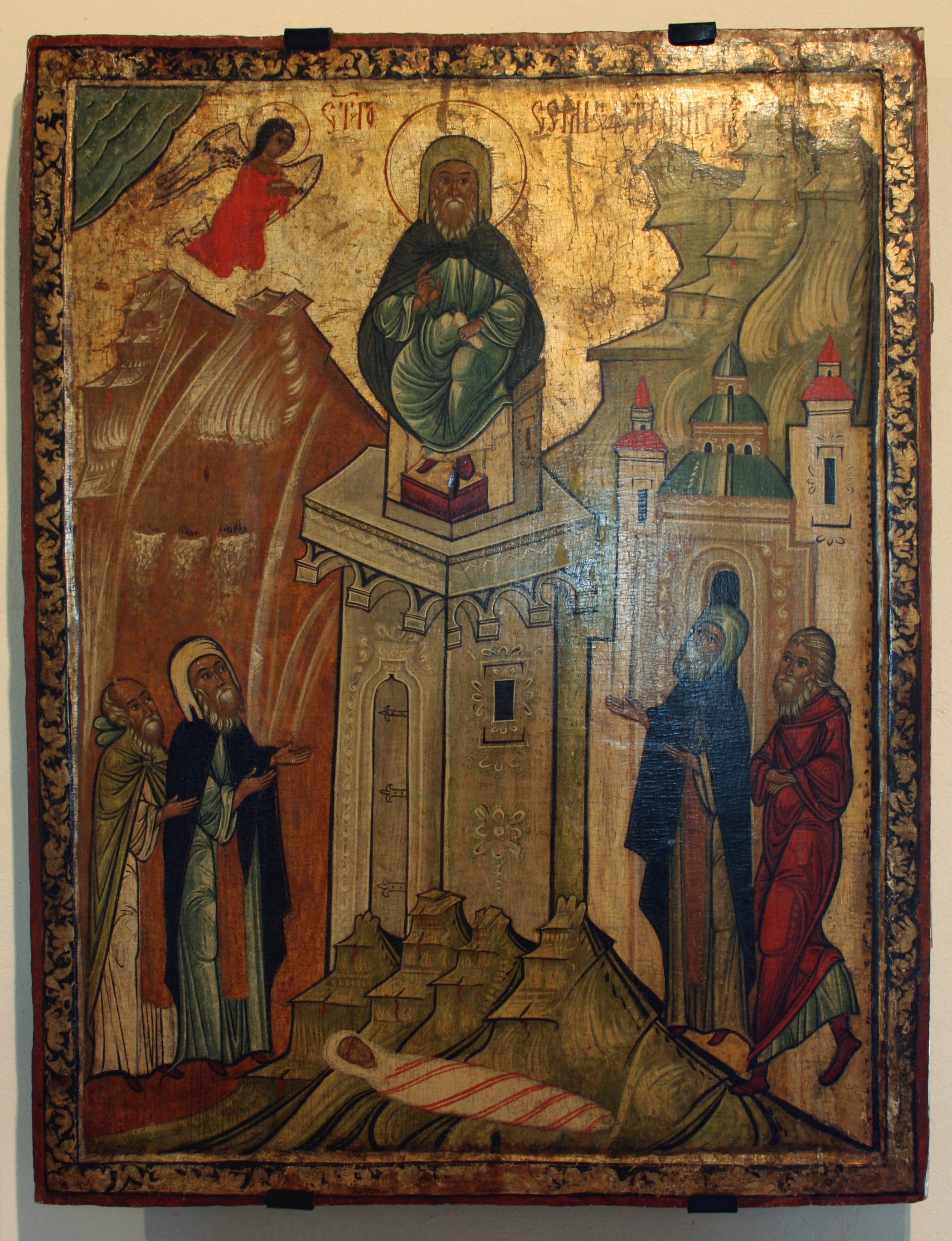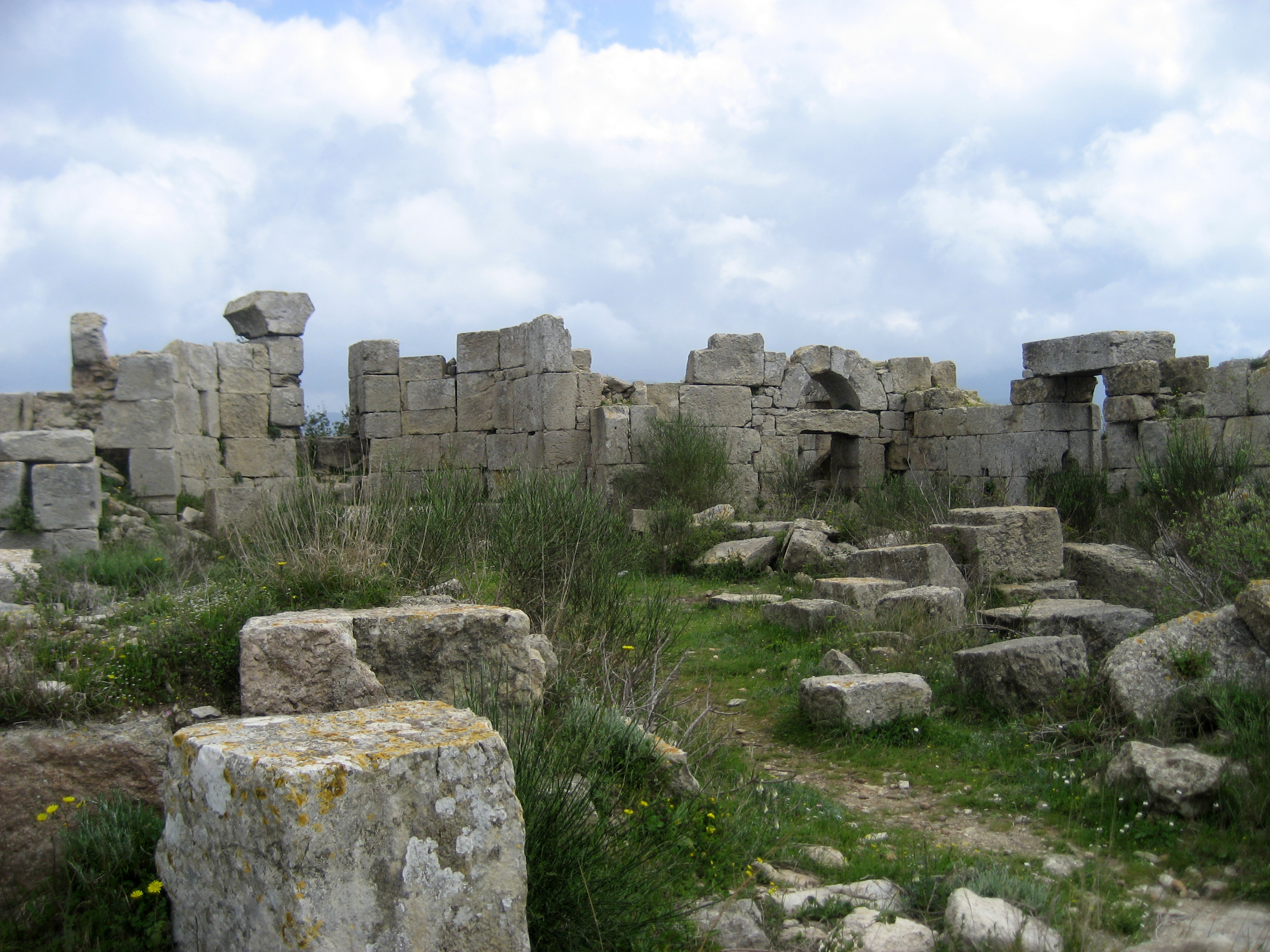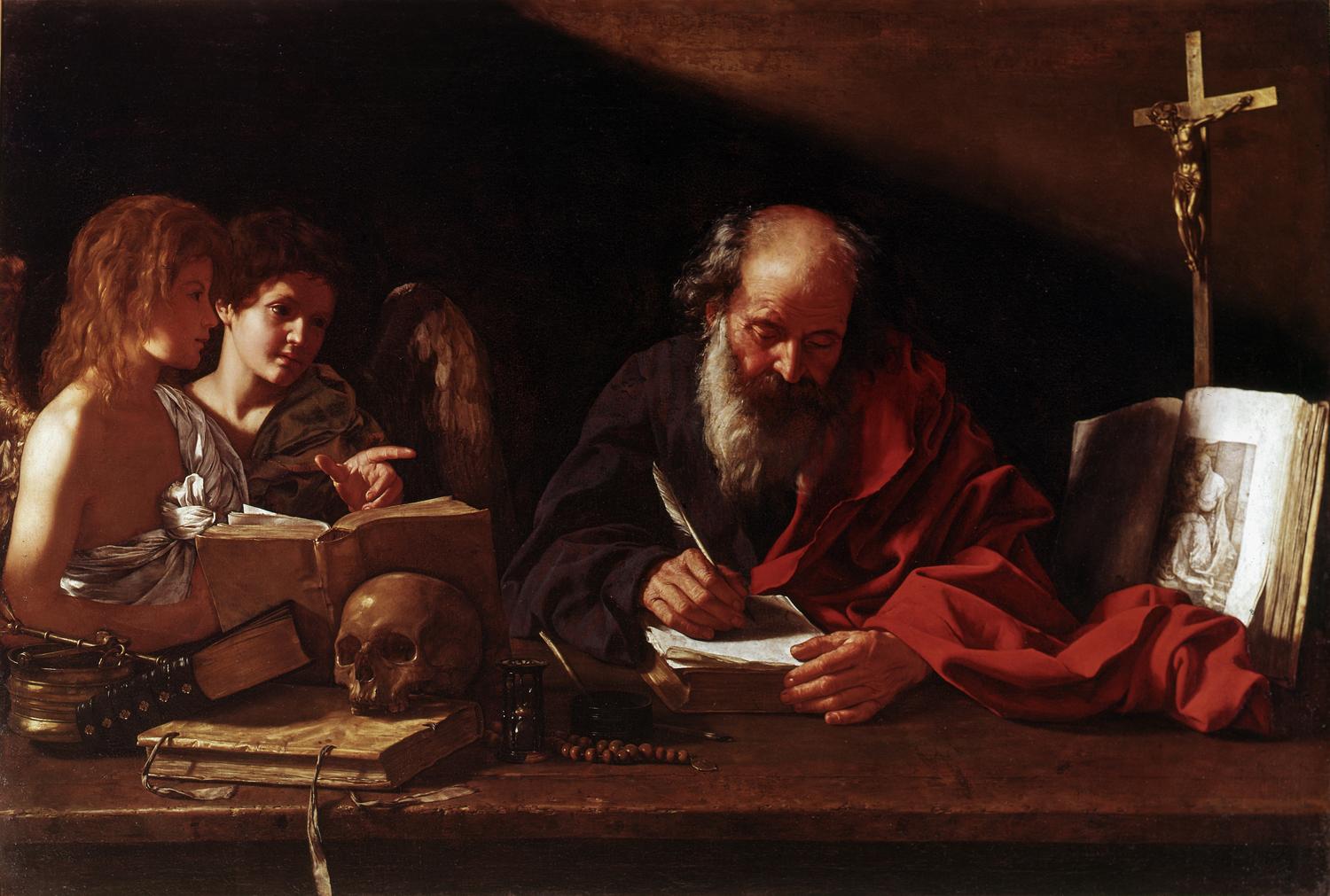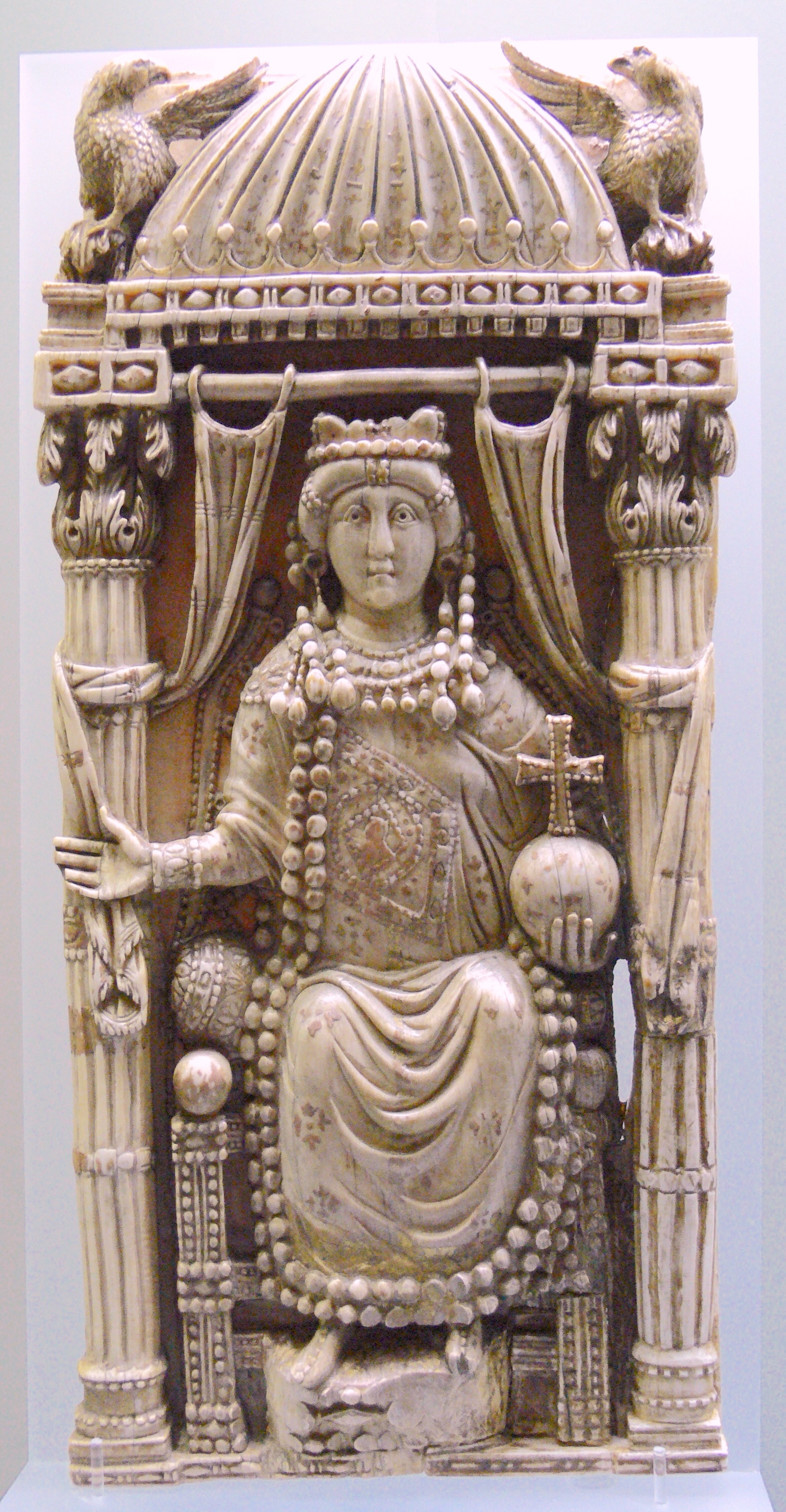|
Stylites
A stylite ( () "pillar dweller", derived from () "pillar" and ()) or pillar-saint is a type of Asceticism#Christianity, Christian ascetic who lives on pillars, preaching, fasting and praying. Stylites believe that the Mortification of the flesh, mortification of their bodies would help ensure the salvation of their souls. Stylites were common in the early days of the Byzantine Empire. The first known stylite was Simeon Stylites, Simeon Stylites the Elder who climbed a pillar in Syria in 423 CE and remained there until his death 36 years later. Ascetic precedents Palladius of Galatia tells of Elpidius the Cappadocian, Elpidius, a hermit from Cappadocia who dwelt in a mountaintop cave outside of Jericho for 25 years until his death, eating only on Saturdays and Sundays and standing up worshiping throughout the night. Gregory of Nazianzus, St. Gregory of Nazianzus speaks of a solitary who stood upright for many years together, absorbed in contemplation, without ever lying down. ... [...More Info...] [...Related Items...] OR: [Wikipedia] [Google] [Baidu] |
Simeon Stylites
Simeon Stylites or Symeon the Stylite ', Koine Greek ', ' (Greek language, Greek: Συμεών ό Στυλίτης; ; 2 September 459) was a Syrian Asceticism#Christianity, Christian ascetic, who achieved notability by living 36 years on a small platform on top of a pillar near Aleppo (in modern Syria). Several other stylites later followed his model (the Greek language, Greek word ''style'' means "pillar"). Simeon is venerated as a saint by the Eastern Catholic Churches, Oriental Orthodox Churches, Eastern Orthodox Church, and Roman Catholic Church. He is known formally as Simeon Stylites the Elder to distinguish him from Simeon Stylites the Younger, Simeon Stylites III and Symeon Stylites of Lesbos. Sources There exist three major early biographies of Simeon. The first of these is by Theodoret, bishop of Cyrrhus, and is found within his work ''Religious History''. This biography was written during Simeon's lifetime, and Theodoret relates several events of which he claims ... [...More Info...] [...Related Items...] OR: [Wikipedia] [Google] [Baidu] |
Simeon The Younger
Simeon Stylites the Younger, also known as Simeon of the Admirable Mountain (, Arabic: مار سمعان العمودي الأصغر ''mār semʻān l-ʻamūdī l-asghar''; 521 – 596/597), is a saint in the Catholic Church and Eastern Orthodox Church. Life Stylites were solitaries who, taking up their abode upon the tops of a pillar (stylos), chose to spend their days amid the restraints thus entailed and in the exercise of other forms of asceticism.Thurston, Herbert; "Stylites (Pillar Saints)", The Catholic Encyclopedia Vol. 14, New York: Robert Appleton Company, 1912, 9 December 2021 Simeon was born at in 521. His father, John, was a native of |
Alypius The Stylite
Alypius the Stylite () was a seventh-century ascetic saint. He is revered as a monastic founder, an intercessor for the infertile. During his lifetime he was a much sought-after starets (guide in the Eastern Christianity, Christian spiritual life). Life Alypius was born in the city of Hadrianopolis in Paphlagonia. His mother, who had been widowed early, was very pious. She sent her son to be educated by the bishop Theodore, gave all of her livelihood to the poor, and herself became a deaconess and lived an ascetic life. Alypius yearned to practice the life of a hermit, but Bishop Theodore would not give him permission to do so. Alypius built a church in honour of the great martyr Euphemia on the site of a dilapidated pagan temple. He erected a pillar beside the church and lived atop it for the majority of his adult life. Two monasteries were built beside his pillar, one for monks and one for nuns, and Alypius served as spiritual director of both. It is claimed that, after ... [...More Info...] [...Related Items...] OR: [Wikipedia] [Google] [Baidu] |
Daniel The Stylite
Daniel the Stylite (, c. 409 – 493) is a saint and stylite of the Eastern Orthodox, Roman Catholic and Eastern Catholic Churches. He is commemorated on 11 December according to the liturgical calendars of these churches. History Early life Daniel was born in Maratha, a village in Upper Mesopotamia near Samosata in present-day Turkey. He entered a monastery at the age of 12 and lived there until he was thirty-eight. During a voyage he made with his abbot to Antioch, he passed by the city of Telanissos (today Deir Semaan) and received the benediction and encouragement of Simeon the Stylite. Then he visited various holy places, stayed in various convents, and retired in 451 AD into the ruins of a pagan temple. Stylite Daniel established his pillar north of Constantinople. The owner of the land where he placed his pillars had not been consulted, hence he appealed to the Byzantine emperor Leo I and patriarch Gennadius of Constantinople. The emperor proposed to dislodge hi ... [...More Info...] [...Related Items...] OR: [Wikipedia] [Google] [Baidu] |
Simeon Stylites The Elder And Simeon Stylites The Younger, 1699
Simeon () is a given name, from the Hebrew (Biblical ''Šimʿon'', Tiberian ''Šimʿôn''), usually transliterated in English as Shimon. In Greek, it is written Συμεών, hence the Latinized spelling Symeon. It is a cognate of the name Simon. Meaning The name is derived from Simeon, son of Jacob and Leah, patriarch of the Tribe of Simeon. The text of Genesis (29:33) argues that the name of ''Simeon'' refers to Leah's belief that God had heard that she was hated by Jacob, in the sense of not being as favoured as Rachel. Implying a derivation from the Hebrew term ''shama on'', meaning "he has heard"; this is a similar etymology as the Torah gives for the theophoric name ''Ishmael'' ("God has heard"; Genesis 16:11), on the basis of which it has been argued that the tribe of Simeon may originally have been an Ishmaelite group (Cheyne and Black, ''Encyclopaedia Biblica''). Alternatively, Hitzig, W. R. Smith, Stade, and Kerber compared שִׁמְעוֹן ''Šīmə‘ōn'' to A ... [...More Info...] [...Related Items...] OR: [Wikipedia] [Google] [Baidu] |
Asceticism
Asceticism is a lifestyle characterized by abstinence from worldly pleasures through self-discipline, self-imposed poverty, and simple living, often for the purpose of pursuing Spirituality, spiritual goals. Ascetics may withdraw from the world for their practices or continue to be part of their society, but typically adopt a Frugality, frugal lifestyle, characterised by the renunciation of Economic materialism, material possessions and physical pleasures, and also spend time fasting while concentrating on the practice of religion, prayer, or meditation. Some individuals have also attempted an ascetic lifestyle to free themselves from addictions to things such as Alcoholic beverage, alcohol, tobacco, Drug, drugs, entertainment, Sexual intercourse, sex, food, etc. Asceticism has been historically observed in many religious and philosophical traditions, most notably among Ancient Greek philosophy, Ancient Greek philosophical schools (Epicureanism, Gymnosophists, Gymnosophism, Stoic ... [...More Info...] [...Related Items...] OR: [Wikipedia] [Google] [Baidu] |
Antioch
Antioch on the Orontes (; , ) "Antioch on Daphne"; or "Antioch the Great"; ; ; ; ; ; ; . was a Hellenistic Greek city founded by Seleucus I Nicator in 300 BC. One of the most important Greek cities of the Hellenistic period, it served as the capital of the Seleucid Empire and later as regional capital to both the Roman and Byzantine Empire. During the Crusades, Antioch served as the capital of the Principality of Antioch, one of four Crusader states that were founded in the Levant. Its inhabitants were known as ''Antiochenes''. The remains of the ancient city of Antioch are mostly buried beneath alluvial deposits from the Orontes River. The modern city of Antakya, in Hatay Province of Turkey, lies in its place. Antioch was founded near the end of the fourth century BC by Seleucus I Nicator, one of Alexander the Great's generals, as one of the tetrapoleis of Seleucis of Syria. Seleucus encouraged Greeks from all over the Mediterranean to settle in the city. The ci ... [...More Info...] [...Related Items...] OR: [Wikipedia] [Google] [Baidu] |
Hermit
A hermit, also known as an eremite (adjectival form: hermitic or eremitic) or solitary, is a person who lives in seclusion. Eremitism plays a role in a variety of religions. Description In Christianity, the term was originally applied to a Christian who lives the eremitic life out of a religious conviction, namely the Catholic spirituality#Desert spirituality, Desert Theology of the Old Testament (i.e., the 40 years wandering in the Zin Desert, desert that was meant to bring about a change of heart). In the Christian tradition the eremitic life is an early form of Monk, monastic living that preceded the monastic life in the cenobium. In chapter 1, the Rule of St Benedict lists hermits among four kinds of monks. In the Roman Catholic Church, in addition to hermits who are members of religious institutes, the Canon law (Catholic Church), Canon law (canon 603) recognizes also Consecrated life#Other forms of consecrated life, diocesan hermits under the direction of their diocesan b ... [...More Info...] [...Related Items...] OR: [Wikipedia] [Google] [Baidu] |
Theodoret
Theodoret of Cyrus or Cyrrhus (; AD 393 – 458/466) was an influential theologian of the School of Antioch, biblical commentator, and Christian bishop of Cyrrhus (423–457). He played a pivotal role in several 5th-century Byzantine Church controversies that led to various ecumenical acts and schisms. He wrote against Cyril of Alexandria's ''12 Anathemas'' which were sent to Nestorius and did not personally condemn Nestorius until the Council of Chalcedon. His writings against Cyril were included in the Three Chapters Controversy and were condemned at the Second Council of Constantinople. Some Chalcedonian and East Syriac Christians regard him as blessed. Biography According to Tillemont, he was born at Antioch in 393, and died either at Cyrrhus ("about a two-days' journey east of Antioch" or eighty Roman miles), or at the monastery near Apamea (fifty-four miles south-east of Antioch) about 457. The following facts about his life are gleaned mainly from his '' ... [...More Info...] [...Related Items...] OR: [Wikipedia] [Google] [Baidu] |
Zeno (emperor)
Zeno (; ; – 9 April 491) was Eastern Roman emperor from 474 to 475 and again from 476 to 491. His reign was plagued by domestic revolts and religious dissension, but was more successful on the foreign front. He is credited with further stabilizing the Eastern empire, while the Western Roman Empire fell following the deposition of Romulus Augustulus. Born in Isauria, Zeno was known as Tarasis before adopting his Greek name and becoming an ally of Emperor Leo I (emperor), Leo I, who saw the Isaurian general as an important counterweight against the Germanic leader Aspar. In 466, he married Leo I's daughter, Ariadne (empress), Ariadne, with whom he had a son, Leo II (emperor), Leo. On the death of Leo I in 474, Zeno's seven-year-old son took the throne as Leo II, with Zeno made co-emperor shortly after. Leo II died of an illness later that year, leaving Zeno as the sole emperor. Despite his early success in making peace with the Vandals, Zeno was an unpopular emperor due to his ... [...More Info...] [...Related Items...] OR: [Wikipedia] [Google] [Baidu] |
Catholic Church
The Catholic Church (), also known as the Roman Catholic Church, is the List of Christian denominations by number of members, largest Christian church, with 1.27 to 1.41 billion baptized Catholics Catholic Church by country, worldwide as of 2025. It is among the world's oldest and largest international institutions and has played a prominent role in the history and development of Western civilization.Gerald O'Collins, O'Collins, p. v (preface). The church consists of 24 Catholic particular churches and liturgical rites#Churches, ''sui iuris'' (autonomous) churches, including the Latin Church and 23 Eastern Catholic Churches, which comprise almost 3,500 dioceses and Eparchy, eparchies List of Catholic dioceses (structured view), around the world, each overseen by one or more Bishops in the Catholic Church, bishops. The pope, who is the bishop of Rome, is the Papal supremacy, chief pastor of the church. The core beliefs of Catholicism are found in the Nicene Creed. The ... [...More Info...] [...Related Items...] OR: [Wikipedia] [Google] [Baidu] |
Constantinople
Constantinople (#Names of Constantinople, see other names) was a historical city located on the Bosporus that served as the capital of the Roman Empire, Roman, Byzantine Empire, Byzantine, Latin Empire, Latin, and Ottoman Empire, Ottoman empires between its consecration in 330 until 1930, when it was renamed to Istanbul. Initially as New Rome, Constantinople was founded in 324 during the reign of Constantine the Great on the site of the existing settlement of Byzantium, and shortly thereafter in 330 became the capital of the Roman Empire. Following the collapse of the Western Roman Empire in the late 5th century, Constantinople remained the capital of the Eastern Roman Empire (also known as the Byzantine Empire; 330–1204 and 1261–1453), the Latin Empire (1204–1261), and the Ottoman Empire (1453–1922). Following the Turkish War of Independence, the Turkish capital then moved to Ankara. Although the city had been known as Istanbul since 1453, it was officially renamed as Is ... [...More Info...] [...Related Items...] OR: [Wikipedia] [Google] [Baidu] |
